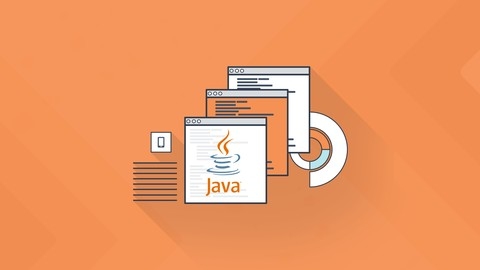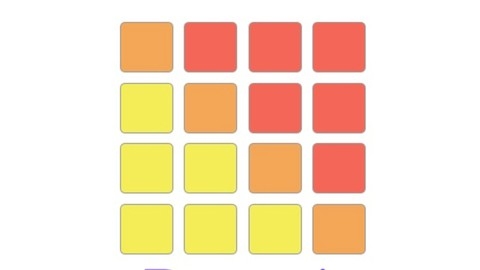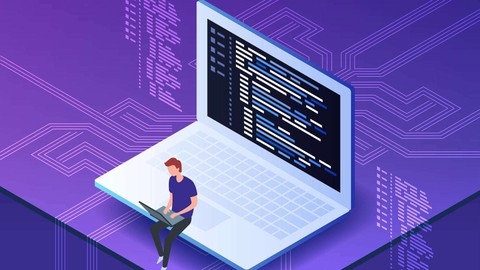Dynamic programming is a powerful algorithmic technique used to solve complex problems by breaking them down into smaller, overlapping subproblems.
It’s a cornerstone of computer science and finds applications in diverse fields, including optimization, scheduling, and bioinformatics.
By mastering dynamic programming, you can tackle challenges that would otherwise be computationally intractable, leading to more efficient and elegant solutions.
This knowledge is highly sought after in technical interviews and can significantly enhance your problem-solving skills.
With the abundance of online learning platforms, finding a top-notch dynamic programming course can feel like searching for a needle in a haystack.
You’re looking for a course that not only explains the theoretical concepts clearly but also provides ample hands-on practice and real-world applications to solidify your understanding.
You want a course that will equip you with the skills and confidence to tackle challenging problems and excel in technical interviews.
Based on our in-depth analysis of numerous courses, we’ve identified Recursion, Backtracking and Dynamic Programming in Java as the best dynamic programming course overall on Udemy.
This comprehensive course provides a solid foundation in recursion and backtracking, laying the groundwork for a deep understanding of dynamic programming principles.
It covers a wide range of problems, from classic examples like the knapsack problem to more advanced topics, ensuring a well-rounded learning experience.
However, your ideal course might depend on your preferred programming language or specific learning style.
So, we’ve compiled a list of other highly-rated dynamic programming courses on Udemy, each with its own strengths and focus.
Continue reading to discover the perfect course to embark on your dynamic programming journey!
Recursion, Backtracking and Dynamic Programming in Java
This course is a solid foundation for understanding recursion, backtracking, and dynamic programming – three algorithmic techniques essential for tackling complex problems.
You’ll begin with a thorough exploration of recursion, learning how to break down problems into smaller, similar subproblems.
The syllabus uses illustrative examples like head and tail recursion, along with the classic Tower of Hanoi puzzle, to bring the concept to life.
This hands-on approach helps solidify your grasp of recursion and its relationship to memory management.
Next, you’ll delve into backtracking, a powerful method for systematically exploring different possibilities until a solution is found.
The course delves into real-world applications, covering problems like the N-Queens puzzle, Hamiltonian paths, and Sudoku.
You’ll gain practical experience implementing these algorithms in Java, understanding their intricacies and limitations.
This hands-on approach fosters a deeper understanding of backtracking and its strengths, helping you solve a wide range of complex problems.
Finally, the course introduces dynamic programming, a technique for breaking down problems into smaller, overlapping subproblems.
This section covers classic examples like the knapsack problem, the rod cutting problem, and the longest common subsequence (LCS) problem.
The focus on real-world applications, alongside practical implementation exercises, empowers you to apply dynamic programming in your own projects.
This course excels at providing a comprehensive foundation in algorithms, blending theoretical concepts with practical application.
The inclusion of complexity analysis equips you to evaluate the performance of different algorithms and make informed choices.
If you’re seeking a comprehensive understanding of fundamental algorithms and their practical application, this course offers a structured path to mastery.
Recursion, Backtracking and Dynamic Programming in Python
You’ll start with the fundamentals of recursion, diving into concepts like head and tail recursion, stack overflow, and optimization methods.
The syllabus emphasizes practical application with examples like factorials, Fibonacci sequences, and string reversal.
The course then transitions seamlessly into backtracking, demonstrating how to systematically explore all possible solutions to problems.
You’ll get hands-on experience with techniques like brute-force search and tackle challenging problems like the N-Queens problem, Hamiltonian path, coloring, and the Knight’s tour.
Finally, you’ll delve into the world of dynamic programming, where you’ll learn to break down complex problems into smaller, overlapping subproblems.
This section covers essential dynamic programming problems like the Knapsack problem, Rod cutting, Subset sum, and the Maximum subarray problem (using Kadane’s Algorithm).
This course is ideal for those who want to expand their programming toolkit with these sophisticated techniques.
You’ll gain a strong understanding of these concepts and be equipped to apply them in real-world scenarios.
Master the art of Dynamic Programming
You’ll begin with the building blocks: recursion and backtracking, gaining a solid foundation for understanding how to break down complex problems into smaller, manageable parts.
This course then dives into the heart of dynamic programming, teaching you the essential principles and techniques for efficiently solving a wide range of problems.
The syllabus emphasizes a step-by-step approach, making the learning process accessible and effective.
You’ll gain hands-on experience by working through classic dynamic programming problems, such as the Rod Cutting Problem and the Longest Increasing Subsequence.
The course also explores more advanced concepts like finding the Longest Common Subsequence, determining the Minimum Deletions to make a string palindrome, and calculating the Edit Distance between strings.
The syllabus even includes a detailed breakdown of Regular Expression Matching, analyzing its time and space complexity.
The inclusion of specific examples like these provides a practical understanding of how dynamic programming principles are applied.
The systematic progression from basic concepts to advanced applications, coupled with the emphasis on real-world examples, makes this syllabus a strong foundation for mastering the art of dynamic programming.
Dynamic Programming - I
The syllabus follows a logical progression, starting with the basics and moving to more complex problems.
You’ll be introduced to key dynamic programming concepts through illustrative examples like “Stairway to Heaven” and “Faulty Stairs,” which provide a practical understanding of how to approach optimization problems.
As you delve deeper, you’ll encounter problems like “Rod Cutter,” which involves finding the optimal way to cut a rod to maximize profit, and “Share Market,” where you learn how to predict the best time to buy and sell stocks.
The course also delves into finding the longest increasing subsequence within a sequence of numbers, a fundamental concept in dynamic programming.
Later, you’ll tackle more challenging scenarios like “Domino Arrangements” and “Burglar’s Night Out,” which will test your ability to apply dynamic programming techniques in different contexts.
The course concludes with “Number Splitting,” where you learn how to strategically divide a number into two parts to achieve a specific outcome.
The “Bonus - Please Read!” section highlights the importance of understanding “Trees,” another critical topic for mastering coding interviews.
This emphasizes the course’s commitment to providing a well-rounded learning experience, going beyond just dynamic programming.
Dynamic Programming Algorithms Master Course
You’ll begin by solidifying your understanding of recursion, working through examples like factorials, Fibonacci sequences, and the classic Tower of Hanoi problem.
From there, you’ll dive into the world of backtracking, tackling challenges like finding subsets, solving the N-Queens puzzle, and even generating brackets.
The course then delves into the heart of dynamic programming, introducing you to techniques like tabulation and memoization.
You’ll learn how to apply these techniques in 1D and 2D dynamic programming scenarios, using examples like the SUPW (Zonal Computing Olympiad) and the knapsack problem.
You’ll also gain a deep understanding of subset sums and partition problems, building a solid foundation for more complex challenges.
As the course progresses, you’ll encounter more advanced topics like combinatorial problems, subsequences, and K-dimensional dynamic programming.
You’ll learn to apply dynamic programming to trees, graphs, and strings, tackling real-world problems like finding the lowest common ancestor (LCA), calculating edit distance, and matching wildcard patterns.
You’ll also explore bit manipulation techniques and the use of bitmasks to optimize your solutions.
The course concludes with a fascinating exploration of game theory and its application in dynamic programming.
You’ll learn about combinatorial games, the Mesere rule, and how to determine N/P positions in games.
You’ll also discover how to apply dynamic programming to solve various game theory problems.
Additionally, the syllabus includes advanced data structures like segment trees and Fenwick trees, equipping you with powerful tools to enhance your dynamic programming solutions.
This course offers a rigorous and rewarding learning experience, equipping you with the skills and knowledge to confidently tackle complex dynamic programming problems.
You’ll gain a valuable understanding of advanced topics like game theory and data structures, expanding your programming abilities significantly.
Dynamic programming
This dynamic programming course is a solid introduction to the subject, emphasizing practical application and problem-solving.
You’ll start by understanding the fundamentals of dynamic programming and its relationship to recursion.
The course then dives into the two key approaches, memoization and tabulation, explaining their differences and how to choose the right approach for specific problems.
The course excels in its focus on practical application.
You’ll learn how to tackle real-world problems through dynamic programming, such as finding the minimum cost path, calculating the longest common subsequence between two strings, or determining the maximum amount of gold you can collect in a mine (the “Gold Mine” problem).
The “House Robber” problem, where you need to figure out the maximum amount of money you can steal without setting off alarms, is another engaging example.
The course provides ample practice problems, so you can gain hands-on experience with each technique.
You’ll also learn to implement solutions in Python, giving you valuable coding skills.
The course is effective in breaking down complex problems into smaller subproblems, a core concept in dynamic programming.
This approach helps you understand how to systematically solve problems and build efficient solutions.
However, you might want to consider the level of programming experience required.
The course is suitable for those with a foundational understanding of programming concepts.
If you’re completely new to programming, you may need additional resources to grasp the concepts fully.
The Road To Dynamic Programming: Java, JavaScript, & Python
You’ll start by getting comfortable with the basics, delving into the Fibonacci sequence and seeing how recursion can be applied.
The course then guides you through the essential techniques of memoization and tabulation, which are key to optimizing your solutions.
One of the strengths of this course is its practical approach.
You’ll tackle real-world problems like finding the minimum number of bills needed to return a specific amount of money.
The course breaks down each problem step-by-step, providing you with clear explanations, pseudo-code, and actual code implementations in Java, JavaScript, and Python.
This hands-on approach allows you to apply what you learn immediately, making the concepts truly stick.
You’ll also explore the Knapsack problem, a classic optimization challenge, and its variations.
The course helps you understand how to analyze the time and space complexity of your solutions, a crucial aspect of designing efficient algorithms.
Throughout the course, you’ll delve into a variety of dynamic programming problems, from finding the number of subsets that add up to a specific number to determining the longest common subsequence of two strings.
The focus on practical applications and clear explanations makes the learning process engaging.
This course is ideal for anyone who wants to develop a solid understanding of dynamic programming principles and gain the skills to apply them to solve real-world problems.
The comprehensive coverage of concepts, combined with the hands-on approach and multiple programming language examples, makes it a valuable resource for programmers at all levels.
Dynamic Programming Python, Coding Interviews & Applications
This dynamic programming course is a great starting point for anyone looking to master this essential algorithmic technique.
You’ll embark on a journey through recursion, learning how to break down complex problems into manageable steps.
The course then dives into two powerful dynamic programming approaches: top-down and bottom-up solutions.
You’ll see these concepts applied to real-world problems like optimizing aircraft spacing in air traffic control, showcasing the practical applications of dynamic programming.
What sets this course apart is its focus on problem-solving.
You’ll learn how to define a solution recursively, translate it into code, and optimize it for efficiency.
The course uses a mix of code walkthroughs and practical examples to solidify your understanding.
You’ll gain a strong foundation in dynamic programming, building towards a final challenge, the “Full Bus Tour Problem.”
This challenging project allows you to apply all the skills you’ve learned, demonstrating your mastery of dynamic programming in a real-world scenario.






